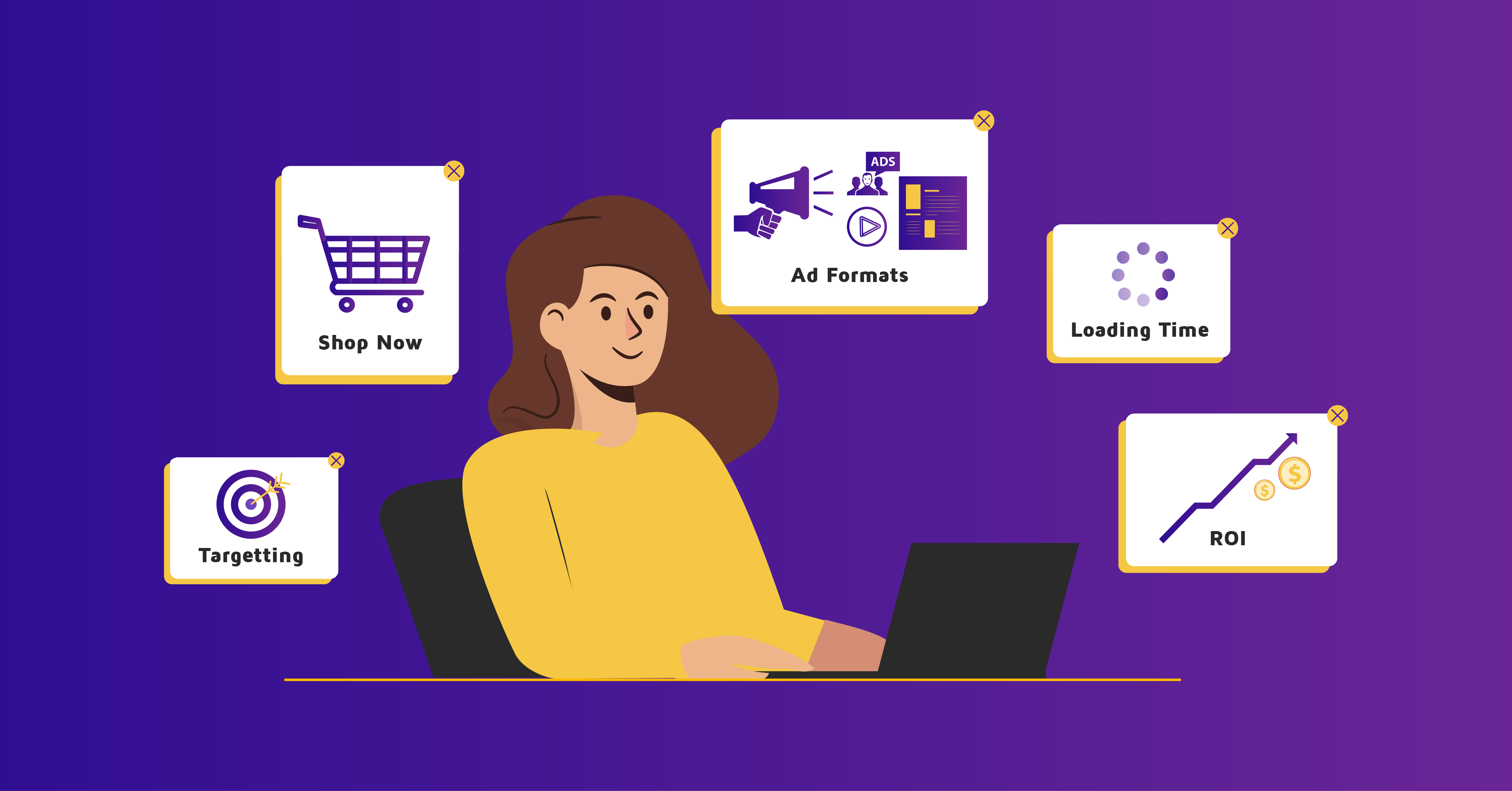E-commerce Ad Campaigns: Ad Types and Optimization Strategy
In the advertising ecosystem, change is a constant. E-commerce brands that recognize this phenomenon, focus on ad campaign optimization as a dynamic process that requires constant adaptation to stay relevant in the current market. As consumer behaviors, market trends, and technologies evolve, brands must continually adjust and refine their ad campaigns to remain competitive and relevant.
Ad campaign optimization is not a one-and-done process, but a continual journey of improvement and adaptation. Brands that remain open to change and are willing to take risks are more likely to stand out in a crowded marketplace and achieve better results from their advertising efforts.
Why is it important for e-commerce websites to optimize ad campaigns?
Optimizing ad campaigns can have a significant impact on a brand’s overall success. E-commerce websites that invest in ad campaign optimization can gain a distinct edge over competitors that are less focused on refining their advertising efforts.
By strategically targeting their audience, experimenting with creative content, and continuously monitoring performance, brands can develop more effective ad campaigns that resonate with their ideal customers and generate a stronger ROI. Through continually testing and refining ad content and targeting, e-commerce websites can achieve increased market share and greater brand differentiation.
What are the best types of online e-commerce ads?
Without a meticulous analysis of goals and budget, it can be challenging to select the most suitable ad format from a plethora of choices. However, here are some of the most promising e-commerce ad formats to focus on.
- Native Ads
Native advertising refers to the type of advertising that seamlessly blends with the website’s content, creating an organic and non-intrusive advertising experience for the user. It is designed to match the form and function of the platform on which it appears. Native ads can appear as in-feed content, and if executed properly, they can be difficult to distinguish from the publisher’s organic content. This e-commerce ad is an effective way for brands to promote their products or services without disrupting the user’s experience.
- Display ads
Display advertising refers to the use of text and images to create simple yet impactful ads, such as banner ads and pop-up ads. These ads are usually displayed on publishing websites. To achieve success with display ads, it is important to ensure that they are placed on the right website that matches the niche of the e-commerce brand. Moreover, display ads can be used for remarketing purposes to increase conversion rates. According to Digital Information Word, “website visitors who are retargeted with display ads are 70% more likely to convert on your website.”
- Search Engine Marketing
Search engine rankings are an essential factor in the success of any e-commerce brand. A consumer’s search engine query results in a list of relevant links, with the top results being the most clicked on. Therefore, the search engine results page (SERP) is a highly competitive space for e-commerce brands. Brands need to invest in both Search Engine Optimization (SEO) and Search Engine Marketing (SEM) to achieve high rankings on both the organic and paid SERPs.
- Pay per Click (PPC)
PPC is an effective advertising model for e-commerce businesses to ensure they are getting the most out of their budget. This model provides greater control over ad placement and targeting and enables businesses to track the effectiveness of their campaigns more accurately. By paying only for clicks, e-commerce brands can optimize their ad spend and improve their conversion rates.
How can e-commerce websites optimize their ad campaigns?
Here are the factors that e-commerce brands must focus on when they are optimizing their ad campaigns.
- Multi-channel ad campaigns
E-commerce brands should focus on multi-channel advertising because it helps them reach audiences across different channels and touchpoints. Additionally, each multi-channel platform has unique strengths that e-commerce brands can leverage to their advantage. By adopting a multi-channel advertising approach, websites can optimize their ad campaigns to reach a wider audience and achieve better results.
Multi-channel advertising is definitely a part of ad campaign optimization, as it helps e-commerce brands to optimize their ad spend by identifying the channels that are driving the most traffic and conversions. By testing different channels and measuring their effectiveness, e-commerce brands can allocate their budget toward the channels that are generating the best results, leading to a more optimized and efficient ad campaign.
- Ad formats
By optimizing the ad format, e-commerce brands can increase the chances of their ads being noticed by potential customers, and also increase the likelihood of conversions. Ad format optimization can help to improve the performance of ad campaigns by providing a better user experience, which can lead to increased engagement and click-through rates. In addition, ad format optimization can help e-commerce brands stay competitive in the market and stand out from their competitors.
The choice of ad format should be based on a thorough understanding of the target audience, campaign objectives, budget, ad placement, and ad platform. For example, if the target audience is more likely to engage with visual content, then image or video ads might be a better choice than text-based ads. If the campaign objective is to increase brand awareness, then native advertising or display ads might be more effective.
- Targeting
E-commerce websites can optimize their targeting in ad optimization by using various techniques such as demographic targeting, interest targeting, location targeting, and behavior targeting. By doing so, they can ensure that their ad campaigns are reaching the most relevant audience for their products, increasing the chances of conversions and sales.
Different targeting methods lead to various benefits. For example, demographic targeting allows businesses to focus on age groups, gender, and income brackets that are more inclined toward their products. Interest targeting helps reach people based on their interests, hobbies, and online activities. With location targeting, businesses can display ads to people in specific geographical areas, which is advantageous for local businesses.
- Bidding strategy
A well-optimized bidding strategy can help e-commerce businesses maximize their ROI while minimizing costs. This optimization strategy helps to ensure that advertisers are bidding the right amount for their ad placements. Overbidding can lead to higher costs, while underbidding can result in missed opportunities. By optimizing their bidding strategy, e-commerce websites can ensure that they are bidding the right amount for their ad placements, thus helping them to get the most value for their ad spend.
Furthermore, optimizing bidding strategy allows e-commerce websites to compete more effectively in ad auctions. It helps them to bid more competitively against their competitors, thereby increasing the chances of winning ad placements. By winning more ad placements, e-commerce websites can increase their visibility and reach more potential customers, which can ultimately result in higher sales and revenue.
- Post-click optimization
Post-click optimization is a crucial aspect of any ad campaign. It involves analyzing data and conducting multiple tests to ensure that users have a positive experience after clicking on an ad. The first step is to create landing pages that align with the user’s expectations. This is especially important when targeting audiences from different cultures and geographies. By creating a localized user experience, businesses can increase engagement and reduce bounce rates.
Another significant factor in post-click optimization is website speed. Slow-loading pages can result in visitors leaving the site and potentially losing new customers. It is recommended that businesses ensure their website speed lives up to the 3-second rule to keep visitors engaged. Additionally, optimizing websites for mobile devices is essential, as many users access websites from their smartphones or tablets.
Optimizing ad campaigns is crucial for the success of e-commerce websites. By selecting the right tools and platforms, businesses can effectively streamline their campaigns and achieve maximum results. With the emergence of various ad platforms, it is now possible to run multiple types of campaigns simultaneously and optimize them to reach a wider audience.
Continuous monitoring and analysis of the campaign’s performance are essential to make informed optimization choices. By regularly reviewing the campaign’s results and making necessary adjustments, e-commerce businesses can ensure that they are getting the most out of their advertising budget.




Leave a Reply